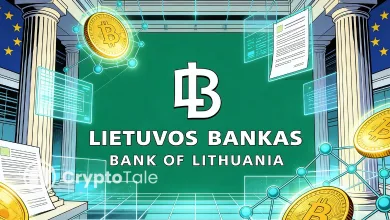Bitcoin Rebounds to $105K; Can This Leg Take BTC Above 110K?

- Bitcoin climbed to a high of $105,000 after bouncing off a solid level near $98,000.
- BTC’s steady development and S&P 500 divergence point to strong momentum for upside.
- A ceasefire report boosted buyer demand and increased chances for a $110K test.
Bitcoin has regained strength, trading at $105,192 at the time of reporting after rebounding sharply from the $98,166 low. The chart indicates a bullish breakout from the falling wedge pattern, confirmed by a higher low formation and a strong daily close above the 50-day moving average (MA) at $105,276.
The recent low aligns precisely with the 1.0 Fibonacci level, serving as support. The price action from this zone formed a rounded bottom pattern, which is often a reversal sign. The move upward has now reclaimed the 0.5 retracement level at $104,774, a confirmation level that suggests bullish momentum may continue. The next resistance stands at $110,449, which is just shy of the swing away from its high at $111,381.
The moving average ribbon shows that the 200-day MA remains strong support at $96,022, while the 50-day MA acts as near-term resistance-turned-support. A clean break and hold above $105,276 could pave the way to $110K.
Meanwhile, the MACD shows a potential shift in momentum. The MACD line (orange) is curling upward toward the signal line (blue), and histogram bars are losing their negativity. This confluence of factors is indicative of weakening bearish pressure in favor of bullish pressure.
Fibonacci projections suggest that 1.272 ($94,572) and 1.618 ($90,000) are levels of support below current prices if sellers dominate. However, reclaiming and holding $105,276 becomes imperative to reach $110,000.
On-Chain Metrics Confirm Uptrend Momentum
Bitcoin’s development activity has fluctuated around the 8.00 to 10.00 range since June 10, showing moderate but consistent network participation. This sustained developer engagement reflects ongoing work on protocol upgrades and broader ecosystem support. Despite market volatility, core contributions remain stable, a signal for long-term innovation and resilience in the Bitcoin network.
Meanwhile, the BTC versus S&P 500 divergence recently flipped positive, now sitting at 0.015. This shift indicates Bitcoin’s decoupling from traditional equity markets, a condition that often precedes more decisive independent price action. The current divergence suggests Bitcoin is entering a phase of potential price discovery.
Related: Bitcoin Drops to $98K And $693M Liquidated in 24 Hours
Global Geopolitical Calm Sparks Crypto Inflow
The recent surge also comes along with President Donald Trump’s announcement on Truth Social of a ceasefire between Iran and Israel. According to his post, both nations agreed to a “complete and total CEASEFIRE” following the completion of final military operations.
Previously, BTC observed a clear drop under $100K over the weekend after reports had come out about U.S. strikes on Iranian nuclear sites. With Trump laying claim to a ceasefire, BTC rallied sharply, so much so that it regained momentum and crossed $105K.
The loosening of political tensions brought market optimism and reduced the risk-off sentiment. These, along with favorable fundamentals and on-chain data points, argue in favor of Bitcoin continuing its upward trend toward the $110K target.




